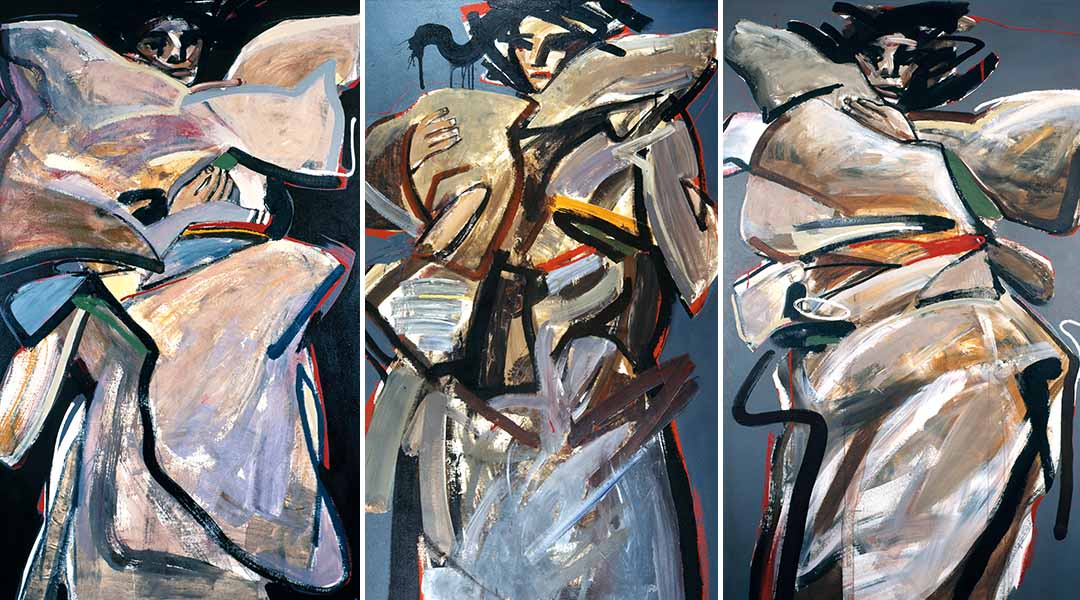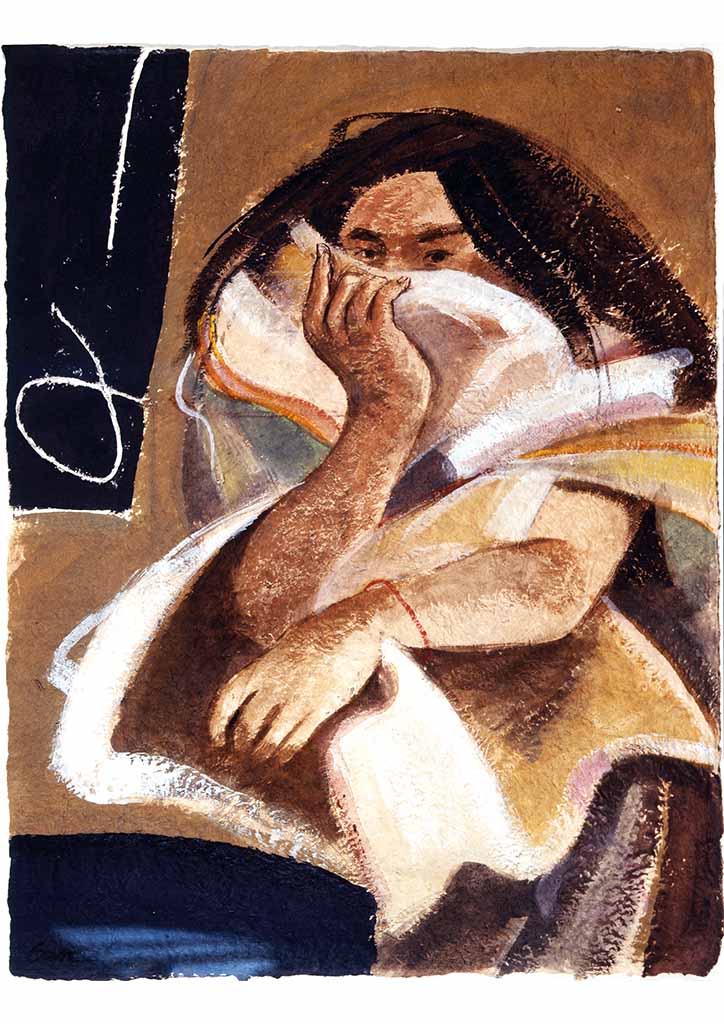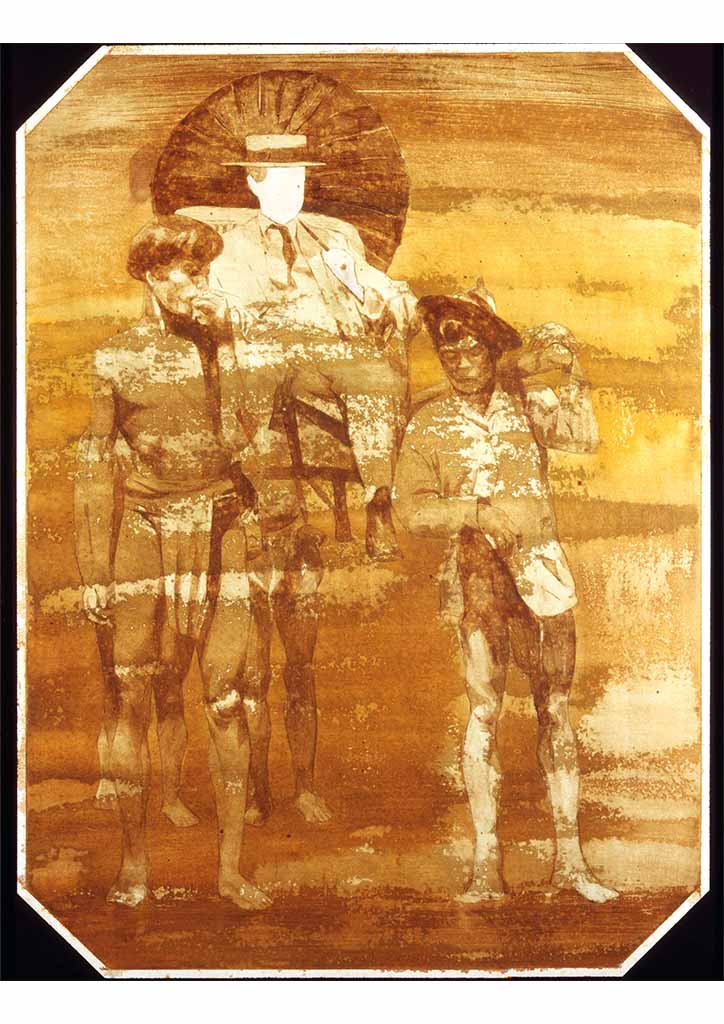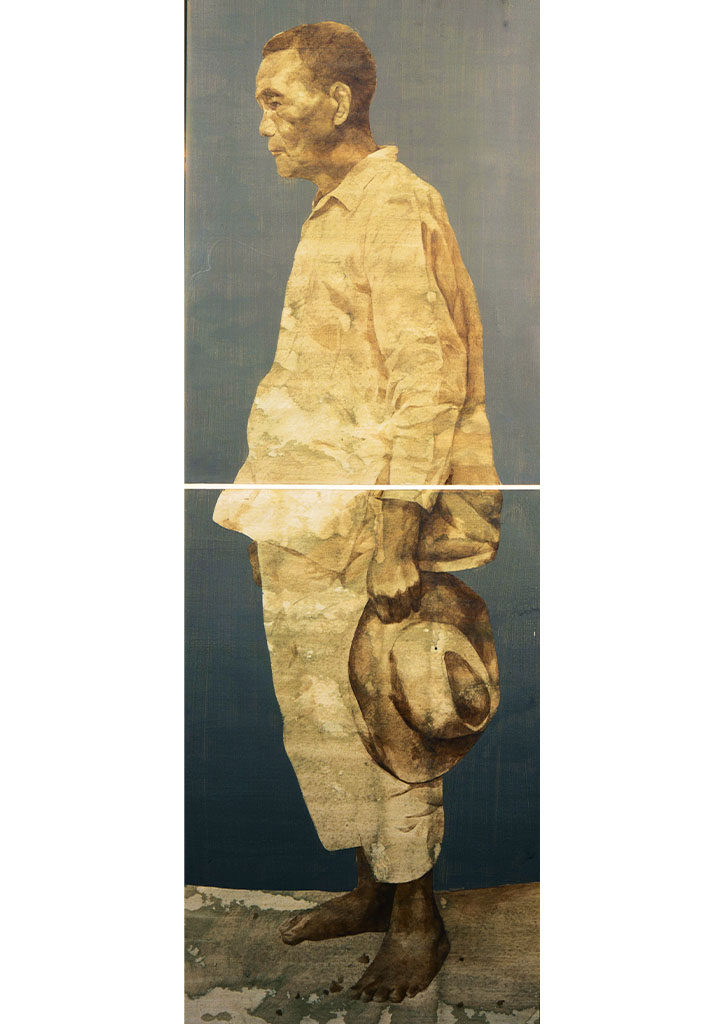
Fusing Old and New: National Artist Benedicto “BenCab” Cabrera
Not many street kids from a tough neighborhood like Bambang in Manila’s Sta. Cruz district go on to become internationally-celebrated painters and feted as National Artists. This is the brief story of one who did.
Benedicto “BenCab” Cabrera (born April 10, 1942) is the youngest of nine children, of whom the second eldest, Salvador or “Bading” would be Ben’s lifelong inspiration. Bading was a naturally-gifted painter who became one of the mainstays of the Mabini artist scene in the 1960s, with his trademark pastel-colored paintings of playful children with large, oval eyes and moon-shaped faces of the type that would become standard as Pinoy animé cartoon features forty years later.
It was diko Bading who helped Ben get started in the business of art since childhood, when Bading sold Ben’s charcoal portraits of Fifties teen idols for his Arellano High School classmates for ten pesos a pop. When the Beatles came to the Philippines in the Sixties, Paul McCartney spotted and bought one of Ben’s paintings in Bading’s Mabini art gallery.

The move to study Fine Arts at UP Diliman in 1959 would have been the natural course for someone who was well into the painting trade by his late adolescence, but for Ben, this meant sacrifice and hard work in those poverty-stricken days when his father was but a menial government employee. Taking up an advertising course instead at the advice of his mentors, Ben quickly racked up experience studying and painting with the greatest mentoring artists of mid-century: Ben Alano for figure painting, Ireneo Miranda for light and shading, Larry Alcala for cartooning, and Jose Joya.
Ben didn’t complete his schooling but took a job as illustrator at the US Embassy (1963-65), before becoming a contributing photographer at the Manila Times (1965-68). The period marked his entry into the bohemian world of the Malate of intellectuals and artists in the Sixties, who converged in places like Los Indios Bravos to talk shop.
READ MORE: The Enlightened Maestro: Martino Abellana, the Amorsolo of the South
It was during this period that Ben started doing a series of paintings of scavengers that would be the precursor to Ben’s muse, Sabel. Sabel was the name of a homeless vagrant who wandered around Ben’s Bambang neighborhood, scavenged for food and clothing from trash bins, and wrapped herself with throwaway plastic sheets to protect herself from the elements. Ben was fascinated by the shimmering shapes and volumes that billowed whenever Sabel walked, and she became the focus of his camera.
It was through Sabel that Ben learned to bend both the traditional dictates of figurative painting with the modern sensibility in which his art was done. This meant abstracting the form of Sabel by focusing on her plastic clothes as overlapping, jerky planes that were surrounded by lines of movement—like the “zoom” lines following a cartoon superhero. This as heightened by playing on the contrast between dark background and bright coloration of her forms to emphasize depth and contrast, classical rules of composition that seamlessly blended with the need for abstraction and sublimation symbolized by her sashaying movement, and the translucent sleeves that looked like Cubist put-ons.

Marrying his first wife, British writer Caroline Kennedy, Ben migrated to London in 1969. Like many Pinoys thrown into a foreign environment for the first time, he started to treasure and look for his identity in the antique shops and second-hand flea markets that dotted the area around Caroline’s Chelsea apartment. Collecting photographs of Filipinos from the turn of the century, Ben would eventually utilize their portrait forms, along with the sepia tint that came with them, to define his solidly figurative work in the Seventies, titled the Larawan
series.
The first of the Larawan series, inaugurated at the Luz Gallery at the onset of Martial Law in 1972, was hailed for the uniquely modern and yet antique-looking images of turn-of-the-century Filipinos whose backgrounds were rendered in the modernist geometric simplicity of plain reds, browns, whites, and blacks.
YOU MIGHT LIKE: Dissecting the stained glass windows at the Manila Cathedral
Throughout the past 40 years, BenCab’s artistic output has been defined primarily by these two great series, Sabel and Larawan, inspired by period photography, and applied using the stencil-like grafting of elements that comes naturally to an artist who once worked in illustration and layout.
That being said, there is nothing banal and cheap about BenCab’s work. Consider Ang Tao (1972), from the Larawan I series. Here, a portrait of an old peasant, straw hat on his side, is bisected into two as a result of the two separate pieces of paper used to portray this life-sized figure. The division is not hidden; rather it is highlighted to show the materials that make up the portrait, as well as air a commentary on the fragmentary quality of collective memory. An even more potently ambivalent image from Larawan I is Brown Brother’s Burden (1972) that shows two Igorot carriers bearing a palanquin upon which a white-suited but faceless man is seated. Is this a commentary on American imperialism in the Philippines? Or a sly play on the fairground cutout figure that everybody pokes their faces into to be photographed?

BenCab’s later work would focus upon social commentary, although not as vehemently as his Social Realist colleagues. The Larawan II series (1978) comments on the lives of Pinoys abroad, like A Domestic Helper, which shows the Pinay as both maid and art object seen frontally and in profile; or portraits of Euro-visiting friends like the art critic Leo Benesa or the abstractionist Mars Galang. Larawan II also highlighted BenCab’s increasing concerns for printmaking techniques like collage and block-like elements, in his Portrait of a Modern Pinay Abroad or Greencard Holder.
BenCab’s return to the Philippines in 1985 upon his separation from Caroline also spurred the decision to establish his studio in Baguio City, where he could be closer to the Cordillera culture that so fascinated him in his Larawan I series—and where he now operates the BenCab Museum.
READ MORE: Artist Charlie Co keeps his passion for art alive in his art house
BenCab appropriated his antique-meets-modern imagery, creating sardonic depictions of consumerism in Two Filipinas in the Era of Multinationals (1983); or documenting the anti-Cory putsches in The Coup (1989). A series of depictions of lovers (1992-1997) would ensue; while a longer series of Japanese geishas (1989-2007) and the Isadora Dancing series (an offshoot of the Sabel form but with a lot of movement) would continue his fascination with the female form wrapped in voluminous billows of cloth.
Today, the BenCab Art Foundation and BenCab Museum; the young and emerging artists it hosts; and promoting Cordillera culture are BenCab’s consuming passions. The museum was created to house in permanent display BenCab’s treasured Cordillera artifacts and indigenous art; and works of Filipino masters and contemporary artists. Within the museum, Gallery Indigo features changing exhibits of established and emerging artists, while the BenCab Gallery houses a collection of BenCab’s favorite works throughout his career, some of which he had to buy back or trade for.
BenCab’s approach to making and supporting Philippine art, and the reason for his National Artist Award in 2006, is the unique fusion of tradition and modernity, never forgetting that the national conscience is embedded in what we see in ourselves, both past and present.
This first appeared in BluPrint Special Issue 3 2011. Edits were made for BluPrint online.
YOU MIGHT LIKE: Ramon Orlina carves 150 glass pieces for Trinity Chapel’s altarpiece


